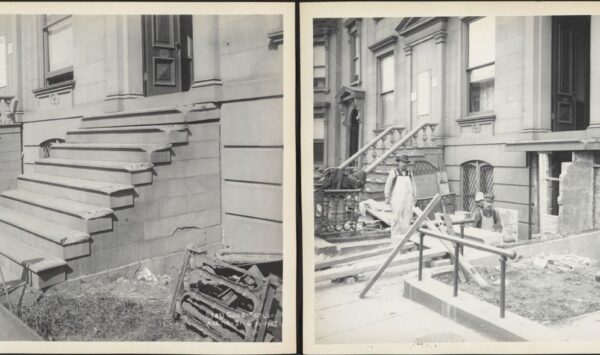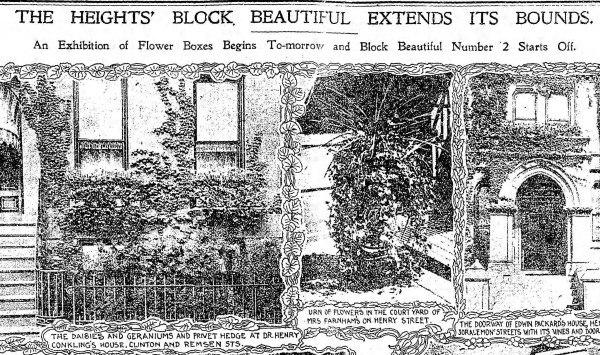HOW TO REMOVE A BROWNSTONE STOOP (1905)

******************************************************************************************************************************** Brownstone Detectives investigates the history of our clients’ homes. The story you are about to read was composed from research conducted in the course of one of those investigations. Do you know the history of YOUR house? ******************************************************************************************************************************** Today, brownstone owners shake their heads in wonder. “Why would anyone intentionally remove the stoop from their own townhouse?” they muse. The stoop, like a timeless portrait’s gilded frame, is a vital element to the design and use of the townhouse. It carries the focus of the viewer into the house itself, just as the stoop physically transports the resident bodily into the house. A brownstone house simply cannot exist without its stoop. Well, like shag carpeting in the 1970s, stoop removal was all the rage in the 1940s. “Remove your stoop and turn your brownstone into apartments,” was the sage advice of contractors hoping to bring their clients’ properties into the 20th century. “Remove your brownstone stoop and add value to your property,” they said. If you didn’t see it happen, though, with your own eyes, you might assume that the destruction was merely accidental. Perhaps a car crashed into the structure and damaged the stoop beyond repair, or time and the elements slowly destroyed the stoop. Well, here, thanks to the New York Historical Society, we have pictures – in all their “glory” – of the “before,” “during” and “after” snapshots of the destruction of one of those august brownstone set of steps. These, documenting the disappearance of a […]
THE GREENEST BLOCK IN BROOKLYN (1902)

******************************************************************************************************************************** Brownstone Detectives investigates the history of our clients’ homes. The story you are about to read was composed from research conducted in the course of one of those investigations. Do you know the history of YOUR house? ******************************************************************************************************************************** As the judging for this year’s “Greenest Block in Brooklyn” award heads into its final round, we bring you a history of the concept of beautifying and greening neighborhoods in the borough of Brooklyn. A BRIEF HISTORY OF BLOCK BEAUTIFICATION IN BROOKLYN Before the Botanic Garden arrived on the scene with its “Greenest Block in Brooklyn” initiative in the 1990s, there was “Block Beautiful.” A number of private Brooklyn citizens, wishing to bring about the greening of their neighborhood, initiated an organized effort to stimulate an active interest in its residents utilizing their green thumbs to good effect. This earliest organized “block beautification” project began somewhat simultaneously in 1902 on two separate streets and section of the borough – Henry Street (in Brooklyn Heights) and on Quincy Street (in the Bedford Section). Led by Miss Zella Milhau of 291 Henry Street, the effort was called “Block Beautiful,” and was an initiative to “green” the block upon which she and her family lived, with the hope that this effort would be replicated throughout the city. Milhau, an artist and active member of the Municipal Art Society and the Fine Arts Club of Manhattan, who lived in the Columbia Heights section on Henry Street between Joralemon and State streets, originated the idea and got […]